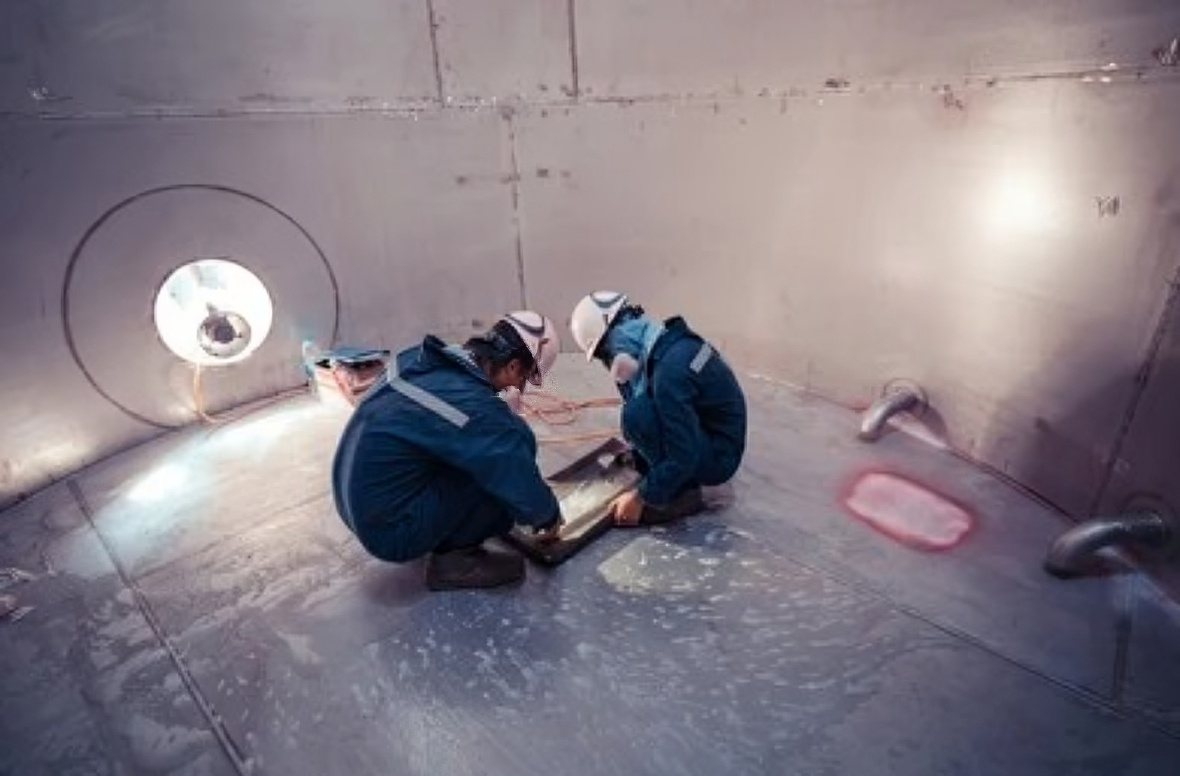by Deepak Pahwa, Director, Technical Drying Services (Asia)
Working in a power plant is inherently accompanied by hazardous working conditions. Here, the majority of the work is carried out in confined spaces, which raises a lot of concern about the safety of the workers. Confined spaces are characterized as a dangerous setup with a limited space where all the crucial and risky tasks are carried out. Looking at the vulnerability attached to the nature of work, it is essential to provide a safe working condition inside the confined spaces.
Confined spaces are identified as fully or partially enclosed areas, entailing tanks, boilers, drums, economizers, condenser water boxes, cooling water ducts, furnaces, DM Water tanks, columns, spheres, boilers, drums, chimneys, pipelines, cyclones, coker drums, ESP areas, kiln, and other similar spaces. Looking at the nature of work and the setting of the space, the area is generally marked by the presence of harmful gases, fumes, or vapors. In addition to this, the place also contains a flammable or explosive atmosphere that increases the risk to life when coupled with excessively high temperatures in oxygen-deficient surroundings. Consequently, operations being carried out within a confined space are marred with possibilities of accidents, harm, or injury that require emergency action to address the problem.
The places are continuously under the threat of fire or explosion as a result of flammable liquids and gases creating explosive atmospheres upon coming in contact with combustible dust. In certain instances, there can also be cases of impaired visibility resulting from smoke particles suspended in the air. Contributing to the already hazardous condition, the presence of viruses, bacteria from fecal matter and sludge, fungi, or molds, make the situation even worse by adding to the misery of the occupants.
Elaborating more about the challenges, the space is plagued with poor air quality and the lack of oxygen only worsens the situation, making it difficult to breathe for the occupants. It is responsible for giving rise to symptoms such as rapid breathing, increased heart rate, clumsiness, and fatigue which can even take an unpleasant turn with instances of nausea and vomiting, collapse, convulsions, and coma incidents. In extreme cases, it can lead to serious conditions of unconsciousness and at times can even be fatal for the person.
Unhealthy and hazardous air inside the confined space eventually makes it difficult for workers to perform maintenance and repairs such as welding, fabrication, riveting, strip lining, nozzle replacement, and tray replacement. Additionally, the presence of many people during maintenance work further contributes to an increase in temperature, which can reach up to 48-50°C accompanied by high relative humidity. Therefore, in order to address the issue, before venturing into maintenance work, additional measures and precautions should be undertaken to create comfortable environmental conditions to support the occupants in efficiently carrying out the work.
To achieve conducive environmental conditions, a thorough testing of the air quality should be conducted. To achieve the desired air quality, fresh air should be supplied to purge out the toxic gases overseeing the correct amount of air change. In the process, oxygen levels must be maintained within safe limits while ensuring that the ventilation equipment is working properly. Going by the recommendation of industry experts, the entire endeavour should be supported by maintaining the temperature between 32-35°C while achieving a relative humidity of less than 60 percent.
In the attempt to achieve the aforementioned conditions resorting entirely to natural ventilation for cooling down the space cannot be completely reliable. Looking at the intricacy of the setup, the method is incapable of achieving optimal air quality. Taking a lot of time, natural ventilation accounts for shutdown of power plants for a much longer time to cool down the furnaces. This ultimately impacts the completion of the project which is invariably delayed due to the time wasted awaiting the cooling down of the space. As a result, it incurs huge losses to the productivity and revenue of the company. Therefore, in order to expedite the process while ensuring efficiency, deploying external dehumidification, temperature control, and ventilation systems can help in achieving comfortable working conditions. The dehumidification technology comes with the ability to provide engineered solutions for humidity control, drying, temperature control and ventilation.
The system is well equipped with dehumidifiers, condensing units, blowers, and ducts that work together in tandem to attain the required temperature and relative humidity levels effectively. They play a vital role in cooling the furnace faster, thereby significantly reducing the downtime of the power plants. The cooling process involves the influx of dehumidified cool conditioned air inside the confined space to remove the contaminated air by creating a positive pressure. Here, the introduction of fresh, dry, and cool air expedites the process of reaching the desired temperature, shortening the time required that is otherwise taken by natural cooling. In the process, it also removes the toxic gases that are responsible for posing a threat to the lives of the workers. Here, the desiccant-based dehumidifiers play a crucial role in absorbing the excess moisture from the air and achieving a relative humidity of less than 60 percent. Additionally, the condensing unit working simultaneously, maintains the temperature between 25-26°C.
The application of such solutions significantly reduces the downtime of the facility and by providing comfortable working conditions, it contributes to the productivity of the workers. Aiding in the timely completion of the project, they help in making up for revenues that otherwise would have been lost due to the long shutdown periods. In the process, it contributes to the health and safety of the workers.
Due to the complexity of power plant operations that lead to hazardous conditions, it is important to regulate the confined space environment before beginning maintenance or repair of machinery. Deploying mechanical ventilation and temperature systems for the task plays a very crucial role in achieving a comfortable and safe working environment inside the confined spaces for the health and safety of the workers and ensures optimum and quality work.






